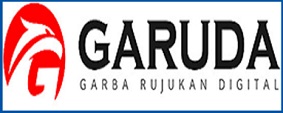Collaborative research between education and medical on study of early childhood neuroscience
DOI:
https://doi.org/10.26555/jecce.v3i1.1671Keywords:
collaborative research, neuroscience, early childhoodAbstract
Student experiences information process causing particular behaviors while studying. Neuroscience is a study to understand behavior and mental process based on brain activity. In Indonesian, collaborative study between education and medicine on preschool-aged children’s neuroscience is still scarce. In fact that using this collaboration, some elements related to student’s behavior and information process can be seen. This paper spells out potential collaborative studies on neuroscience of preschool-aged children. This study is categorized into qualitative descriptive research. The data were collected through an in-depth interview with the head of education and research section of UNS Hospital and document study. The result of the study found a number of potential collaborative studies between UNS Hospital and ECE department of UNS, namely: 1) Assessing level of stress using Bio-neurofeedback; 2) Assessing Learning comfort using Electroencephalograph; 3) Assessing Interest and Aptitude using Electroencephalograph; and 4) Therapy on Gadget Addiction using Bio-neurofeedback. Those findings can be used as a basic for further research about neuroscience in early childhood.
References
Ambardini, R. L. (2009). Pendidikan jasmani dan prestasi akademik: Tinjauan neurosains. Jurnal Pendidikan Jasmani Indonesia, 6(1), 7. https://doi.org/10.21831/jpji.v6i1.432
Ansari, A., & Winsler, A. (2016). Kindergarten readiness for low-income and ethnically diverse children attending publicly funded preschool programs in Miami. Early Childhood Research Quarterly, 37, 69–80. https://doi.org/10.1016/j.ecresq.2016.06.002
Bowers, J. S. (2016). Psychology, not educational neuroscience, is the way forward for improving educational outcomes for all children: Reply to Gabrieli (2016) and Howard-Jones et al. (2016). Psychological Review, 123(5), 628–635. https://doi.org/10.1037/rev0000043
Brouwer, A.-M., Neerincx, M. A., & Kallen, V. (2011). EEG alpha asymmetry, heart rate variability and cortisol in response to virtual reality induced stress. Journal of Cyber Therapy and Rehabilitation, 4(1), 83–99.
Center on the Developing Child at Havard University. (2011). Building the Brain’s “Air Traffic Control†System: How Early Experiences Shape the Development of Executive Function. Harvard University. http://developingchild.harvard.edu/index.php/ download_file/-/view/836/
Chatib, M. (2011). Gurunya Manusia. Kaifa.
Ginsburg, H. (2014). Menyelami Pikiran Anak: Wawancara Klinis dalam Penelitian dan Praktik Psikologi Anak (I). Pustaka Pelajar.
Guay, F., Stupnisky, R., Boivin, M., Japel, C., & Dionne, G. (2019). Teachers’ relatedness with students as a predictor of students’ intrinsic motivation, self-concept, and reading achievement. Early Childhood Research Quarterly, 48, 215–225. https://doi.org/10.1016/j.ecresq.2019.03.005
Hanly, M., Edwards, B., Goldfeld, S., Craven, R. G., Mooney, J., Jorm, L., & Falster, K. (2019). School starting age and child development in a state-wide, population-level cohort of children in their first year of school in New South Wales, Australia. Early Childhood Research Quarterly, 48, 325–340. https://doi.org/10.1016/j.ecresq.2019.01.008
Khairunnisa, E. (2016). Tingkat kecanduan gadget pada anak mengkhawatirkan. CNN Indonesia. https://www.cnnindonesia.com/tv/20160603100101-403-135651/tingkat-kecanduan-gadget-pada-anak-mengkhawatirkan
Kostelnik, M. J., Soderman, A. K., & Whiren, A. P. (2017). Kurikulum Pendidikan Anak Usia Dini Berbasis Perkembangan Anak (Terjemah). Kencana.
Makmun, M. (2017). 87% Mahasiswa Indonesia Salah Jurusan. Berita Satu. https://www.beritasatu.com/mardiana-makmun/nasional/448668/87-mahasiswa-indonesia-salah-jurusan
Marzbani, H., Marateb, H., & Mansourian, M. (2016). Methodological note: Neurofeedback: A comprehensive review on system design, methodology and clinical applications. Basic and Clinical Neuroscience Journal, 7(2). https://doi.org/10.15412/J.BCN.03070208
National Scientific Council On The Developing Child. (2014). Stress Disrupts the Architecture of the Developing Brain. Harvard University.
Putra, N., & Dwilestari, N. (2016). Penelitian Kualitatif PAUD (Pendidikan Anak Usia Dini) (4th ed.). PT Raja Grafindo Persada.
Rustiana, E. R. (2011). Efek psikologis dari pendidikan jasmani ditinjau dari teori neurosains dan teori kognitif sosial. Media Ilmu Keolahragaan Indonesia, 1(2), 4.
Slot, P. L., Leseman, P. P. M., Verhagen, J., & Mulder, H. (2015). Associations between structural quality aspects and process quality in Dutch early childhood education and care settings. Early Childhood Research Quarterly, 33, 64–76. https://doi.org/10.1016/j.ecresq.2015.06.001
Sugiyono. (2013). Metode Penelitian Kuantitatif, Kualitatif, dan R&D. Alfabeta.
Suminah, E., Siantayani, Y., Paramitha, D., Ritayanti, U., & Nugraha, A. (2018). Pedoman Penilaian Pembelajaran Pendidikan Anak Usia Dini. Direktorat Pembinaan Pendidikan Anak Usia Dini DIrektorat Jenderal Pendidikan Anak Usia Dini dan Pendidikan Masyarakat Kementerian Pendidikan dan Kebudayaan.
Tim CNN Indonesia. (2019). Sekolah anak: Antara kebutuhan anak dan obsesi orang tua. CNN Indonesia. https://www.cnnindonesia.com/gaya-hidup/20191220192115-284-458852/sekolah-anak-antara-kebutuhan-anak-dan-obsesi-orang-tua
Downloads
Published
How to Cite
Issue
Section
License
Authors who publish with this journal agree to the following terms:
- Authors retain copyright and grant the journal right of first publication with the work simultaneously licensed under a Creative Commons Attribution-ShareAlike 4.0 International License that allows others to share the work with an acknowledgement of the works authorship and initial publication in this journal.
- Authors are able to enter into separate, additional contractual arrangements for the non-exclusive distribution of the journals published version of the work (e.g., post it to an institutional repository or publish it in a book), with an acknowledgement of its initial publication in this journal.
- Authors are permitted and encouraged to post their work online (e.g., in institutional repositories or on their website) prior to and during the submission process, as it can lead to productive exchanges, as well as earlier and greater citation of published work (See The Effect of Open Access).












